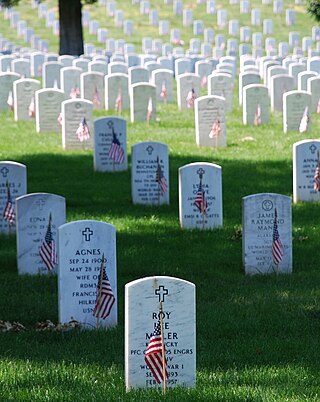
Memorial Day is a federal holiday in the United States for honoring and mourning the U.S. military personnel who have died while serving in the United States armed forces. It is observed on the last Monday of May. From 1868 to 1970, it was observed on May 30.

The Grand Army of the Republic (GAR) was a fraternal organization composed of veterans of the Union Army, Union Navy, and the Marines who served in the American Civil War. It was founded in 1866 in Decatur, Illinois, and grew to include hundreds of "posts" across the North and West. It was dissolved in 1956 at the death of its last member, Albert Woolson.
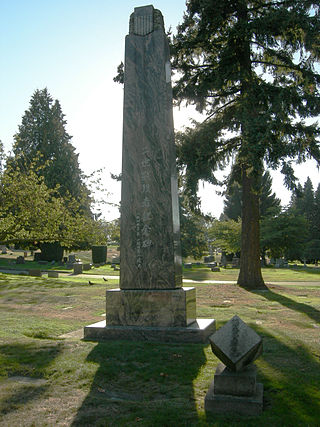
Lake View Cemetery is a private cemetery located in Seattle, Washington, in the Capitol Hill neighborhood, just north of Volunteer Park. Known as "Seattle's Pioneer Cemetery," it is run by an independent, non-profit association. It was founded in 1872 as the Seattle Masonic Cemetery and later renamed for its view of Lake Washington to the east.

Sons of Union Veterans of the Civil War (SUVCW) is an American congressionally chartered fraternal organization that carries out activities to preserve the history and legacy of the United States Armed Forces veterans who fought during the Civil War. It is the legal successor to the Grand Army of the Republic, the large and influential grouping of Union Army veterans that existed in the decades following the Civil War. Most SUVCW activities occur at the "Camp", or local community, level. In turn, Camps are grouped into state and/or regional structures called "Departments". The National organization, with headquarters at the National Civil War Museum in Harrisburg, Pennsylvania, meets annually in a National Encampment that is attended by SUVCW members, known as "Brothers", from all Camps and Departments.

Vale Cemetery is a historic rural cemetery and the largest cemetery in Schenectady, New York. It opened on 21 October 1857 when the Rev. Julius Seely dedicated what was then termed "the Vale". It has tripled its size since opening and today it holds the remains of some of the most notable persons in Upstate New York. In 1973, a 35-acre tract of unused and abandoned cemetery land around the ponds of Cowhorn Creek was sold to the city of Schenectady to form Vale Park.

Cave Hill Cemetery is a 296-acre (1.20 km2) Victorian era National Cemetery and arboretum located at Louisville, Kentucky. Its main entrance is on Baxter Avenue and there is a secondary one on Grinstead Drive. It is the largest cemetery by area and number of burials in Louisville.

Fort Logan National Cemetery is a United States National Cemetery in Denver, Colorado. Fort Logan, a former U.S. Army installation, was named after Union General John A. Logan, commander of US Volunteer forces during the American Civil War. It contains 214 acres (87 ha) and has over 122,000 interments as of 2014. It was listed on the National Register of Historic Places in 2016.
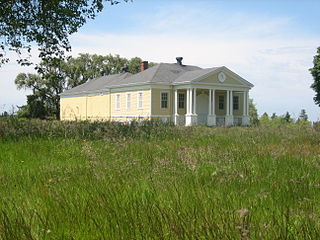
Fort Lawton was a United States Army post located in the Magnolia neighborhood of Seattle, Washington overlooking Puget Sound. In 1973 a large majority of the property, 534 acres of Fort Lawton, was given to the city of Seattle and dedicated as Discovery Park. Both the fort and the nearby residential neighborhood of Lawton Wood are named after Major General Henry Ware Lawton.

Crown Hill National Cemetery is a U.S. National Cemetery located in Indianapolis, Marion County, Indiana. It was established in 1866 on Section 10 within Crown Hill Cemetery, a privately owned cemetery on the city's northwest side. Administered by the United States Department of Veterans Affairs, the National Cemetery encompasses 1.4 acres (0.57 ha) and serves as a burial site for Union soldiers who fought in the American Civil War.

Cypress Hills National Cemetery is a 18.2-acre (7.4 ha) cemetery located in the Cypress Hills neighborhood of Brooklyn, New York City. It is the only United States National Cemetery in New York City and has more than 21,100 interments of veterans and civilians.

Richmond National Cemetery is a United States National Cemetery three miles (4.8 km) east of Richmond in Henrico County, Virginia. Administered by the United States Department of Veterans Affairs, it encompasses 9.7 acres (3.9 ha), and as of 2021 had more than 11,000 interments. It is closed to new interments. Richmond National Cemetery was listed on the National Register of Historic Places in 1995.
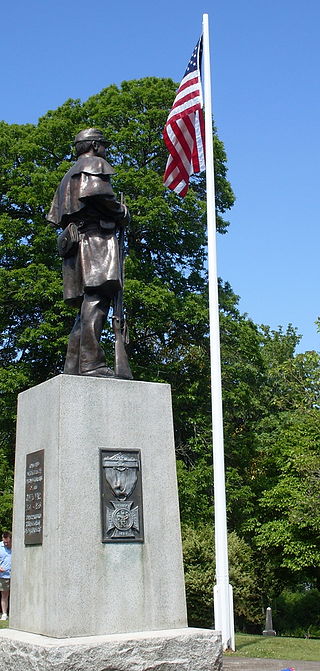
The Grand Army of the Republic Cemetery is a cemetery for American Civil War veterans in the U.S. city of Portland, Oregon. It is located at S.W. Palatine Hill Road and S.W. Boones Ferry Road, next to River View Cemetery.

Eugene Pioneer Cemetery is a pioneer cemetery in Eugene, Oregon, United States. It is one of the three oldest cemeteries in Eugene. It is the largest in both acreage and burials encompassing 16 acres (65,000 m2) with approximately 5,000 burials.

The Grand Army of the Republic Hall is an historic building located at 23 East Downer Place on Stolp Island in Aurora, Illinois, in the United States.
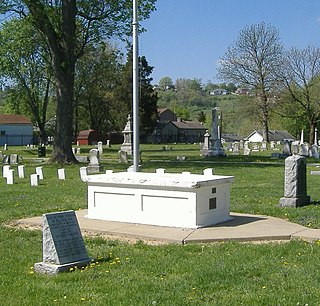
The Grand Army of the Republic Monument, in the Linden Grove Cemetery of Covington, Kentucky, was built in 1929 by the O. P. Sine of Garfield Post No. 2 of the Grand Army of the Republic, a group comprising the remaining veterans of the Union army.
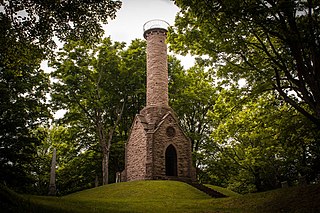
Mount Albion Cemetery is located on New York State Route 31 in the Town of Albion, New York, United States, east of the village of Albion, which owns and operates it. It is a rural cemetery established in the 1840s on a glacial drumlin.

The Stephenson Grand Army of the Republic Memorial, also known as Dr. Benjamin F. Stephenson, is a public artwork in Washington, D.C. honoring Dr. Benjamin F. Stephenson, founder of the Grand Army of the Republic, a fraternal organization for Union veterans. The memorial is sited at Indiana Plaza, located at the intersection of 7th Street, Indiana Avenue, and Pennsylvania Avenue NW in the Penn Quarter neighborhood. The bronze figures were sculpted by J. Massey Rhind, a prominent 20th-century artist. Attendees at the 1909 dedication ceremony included President William Howard Taft, Senator William Warner, and hundreds of Union veterans.


















